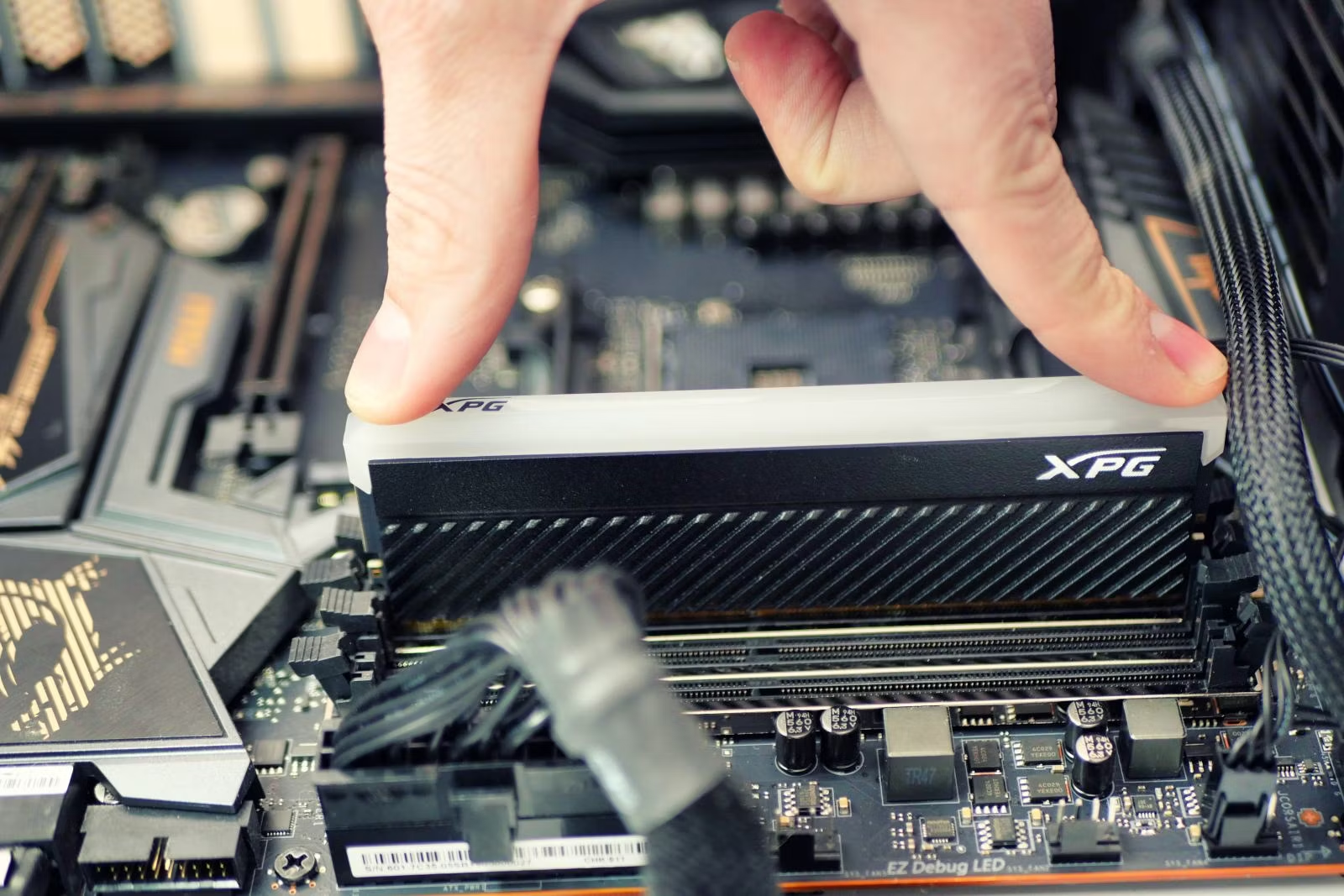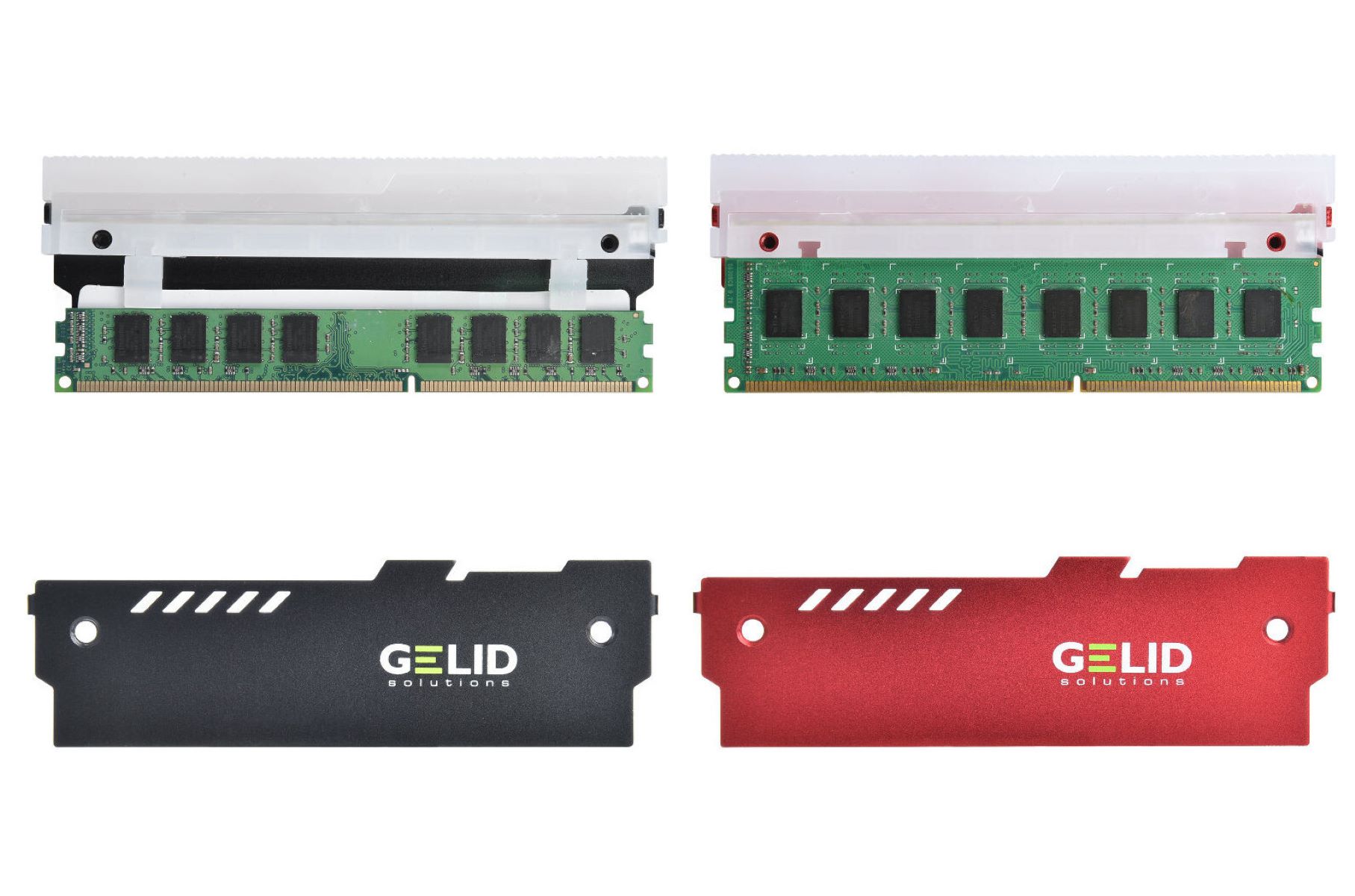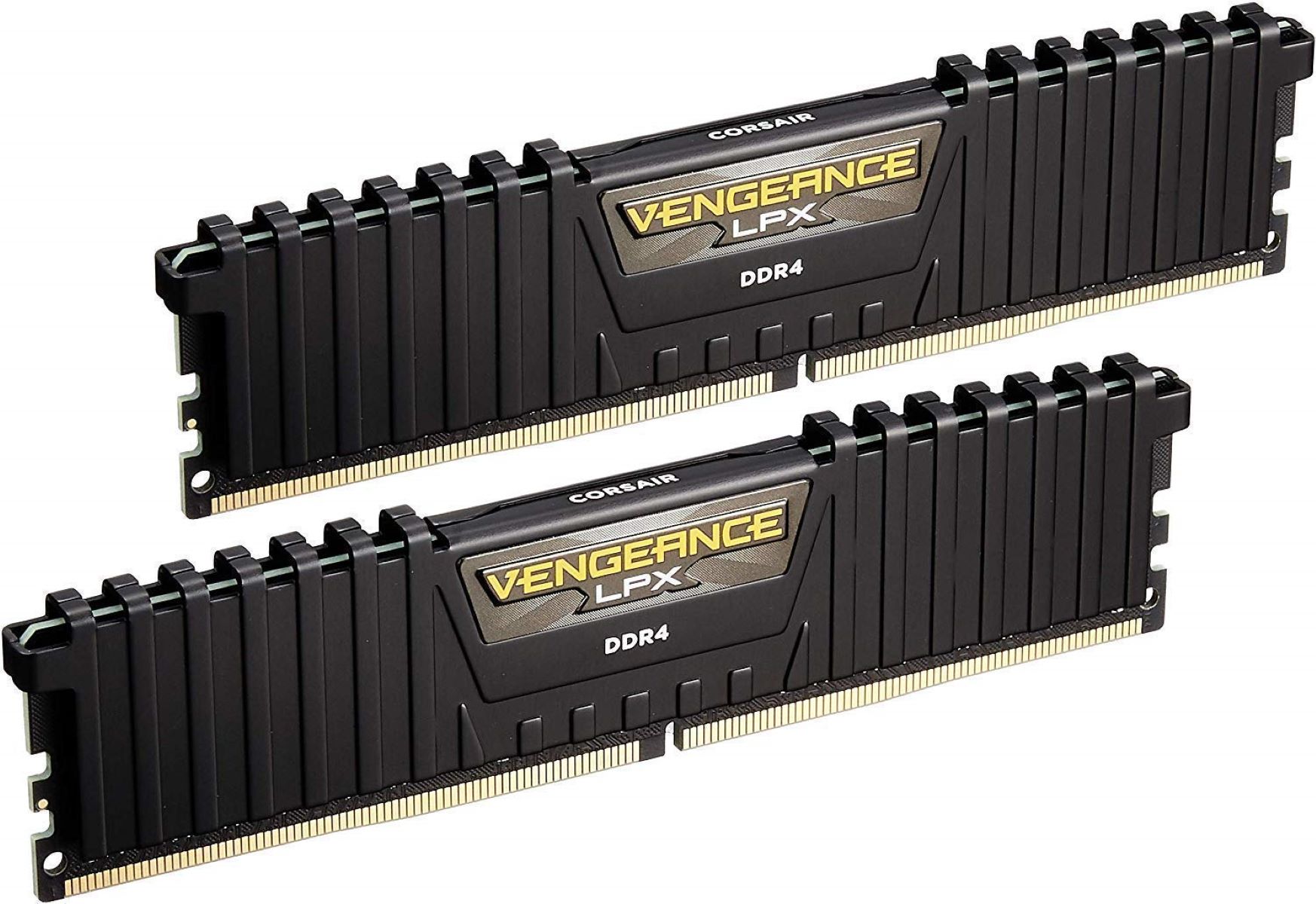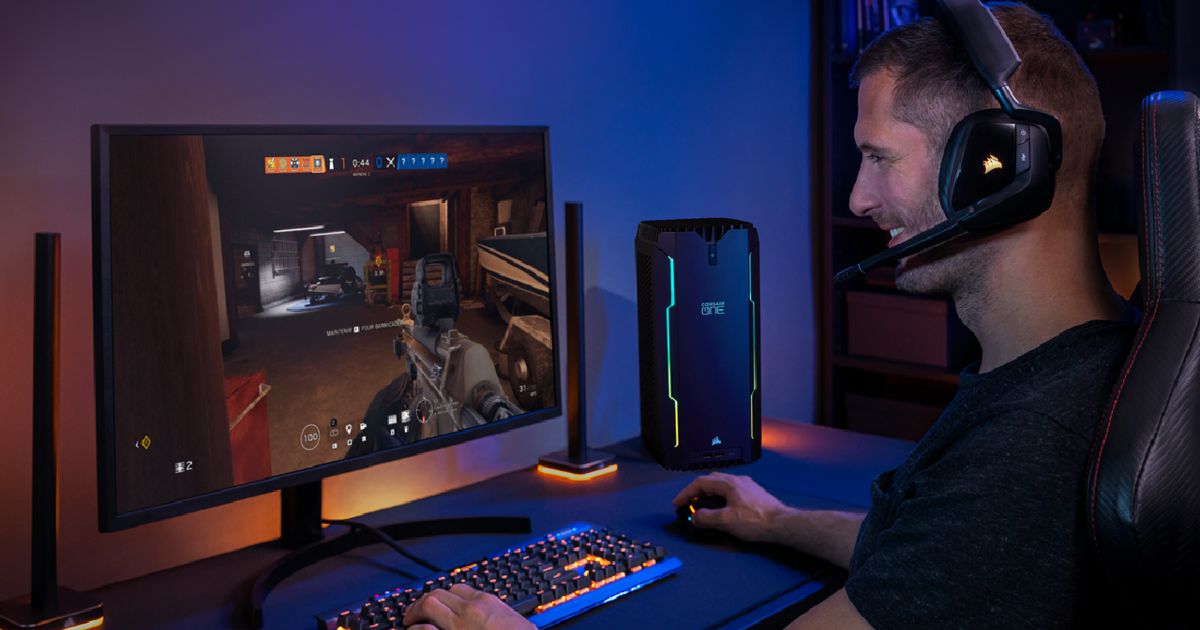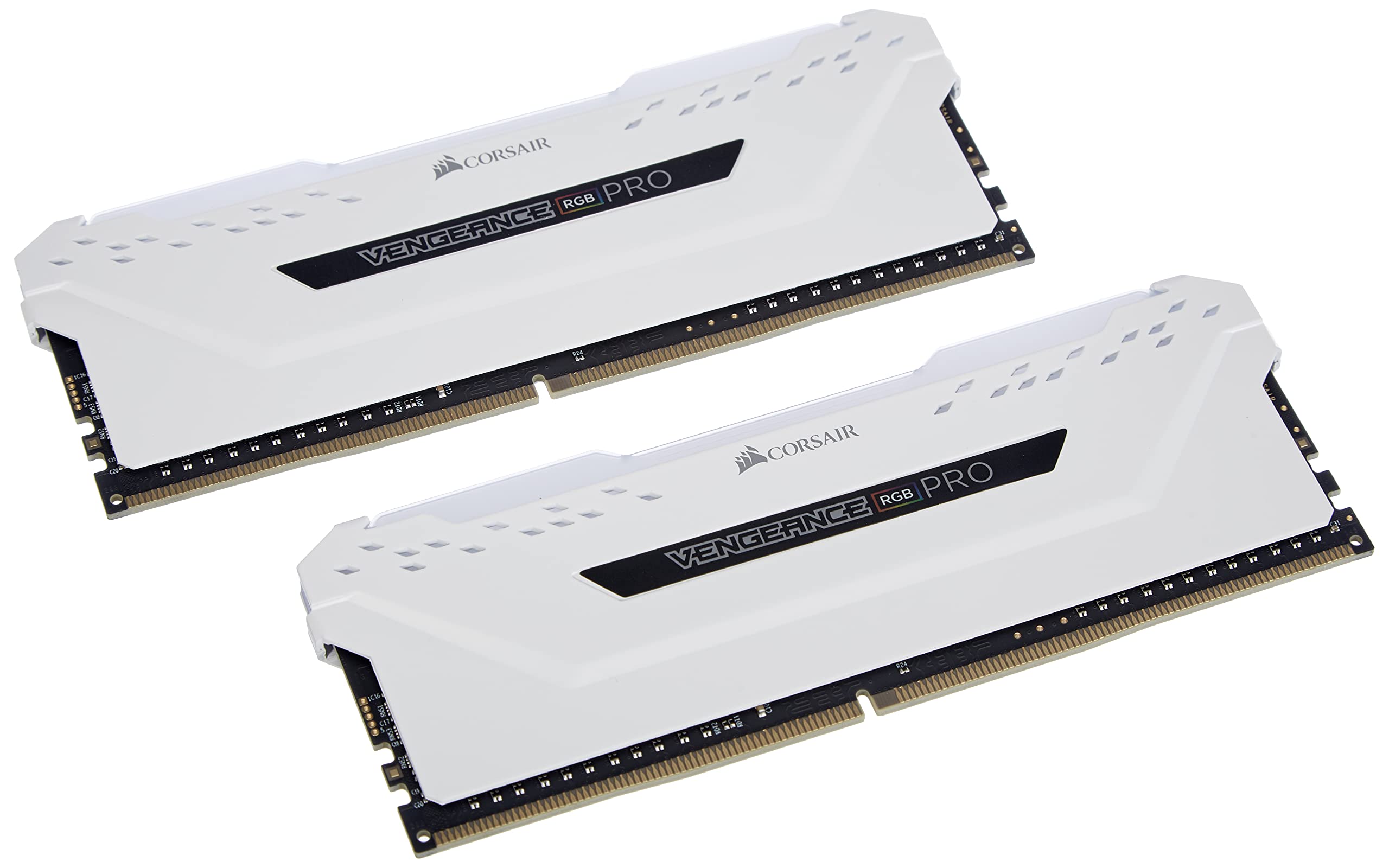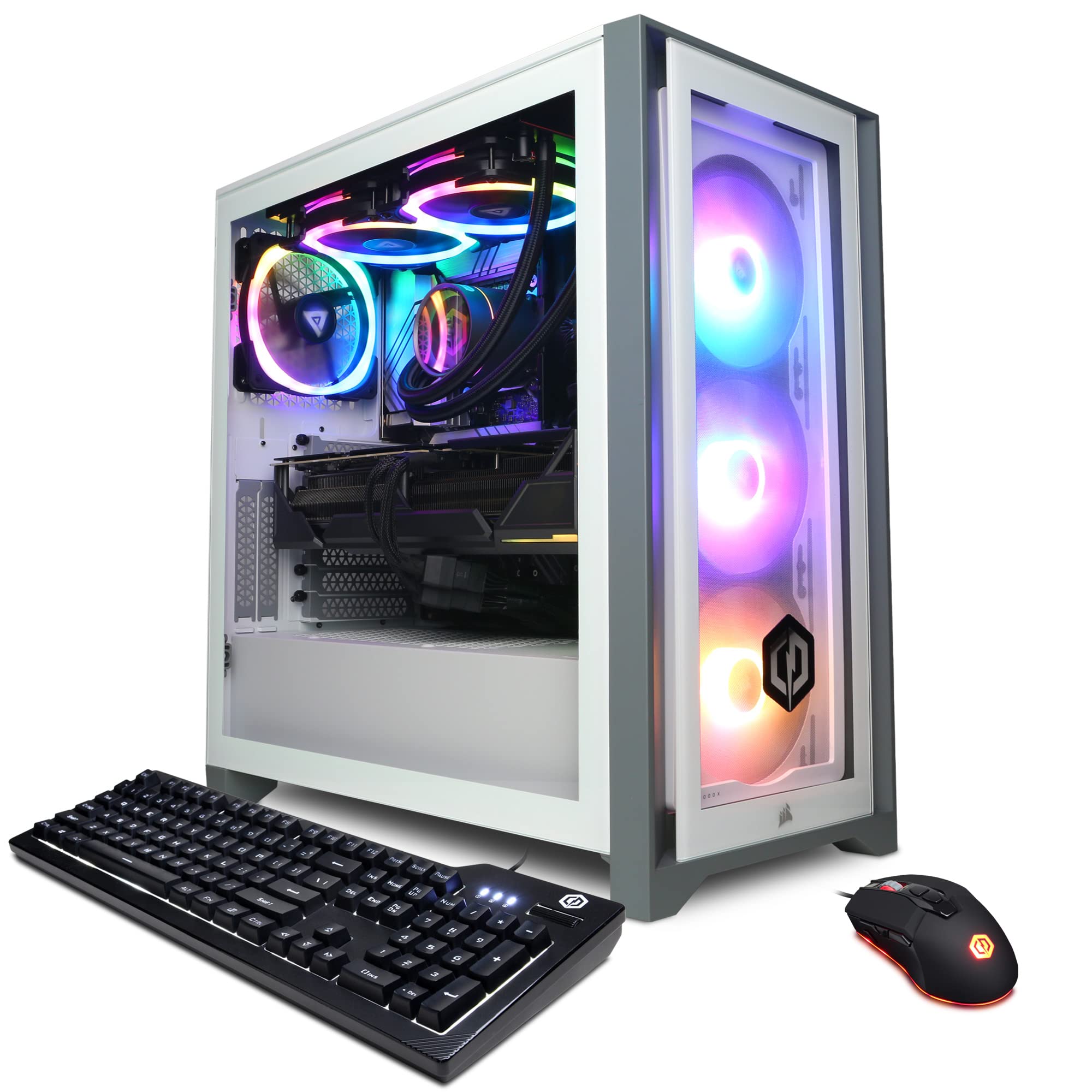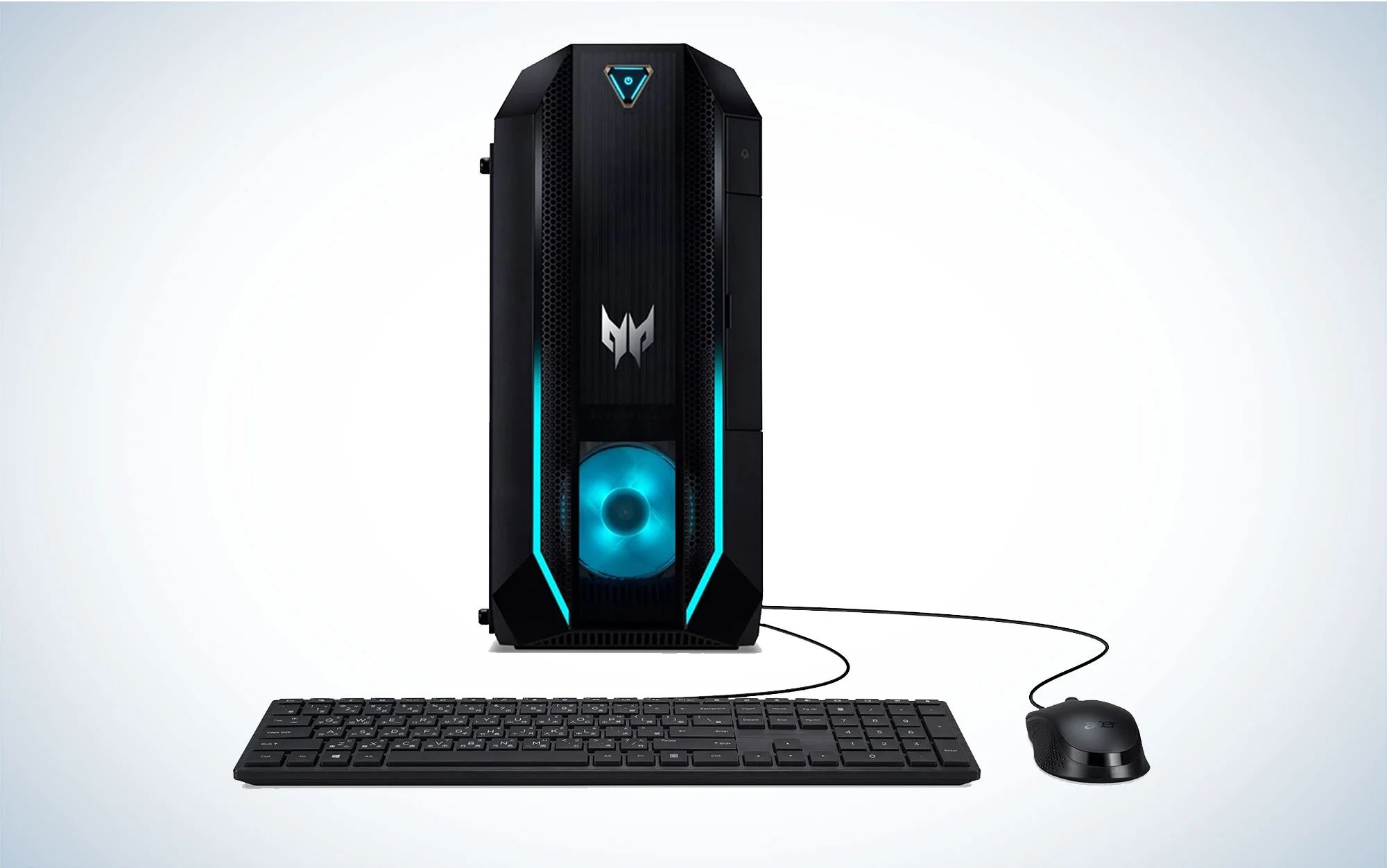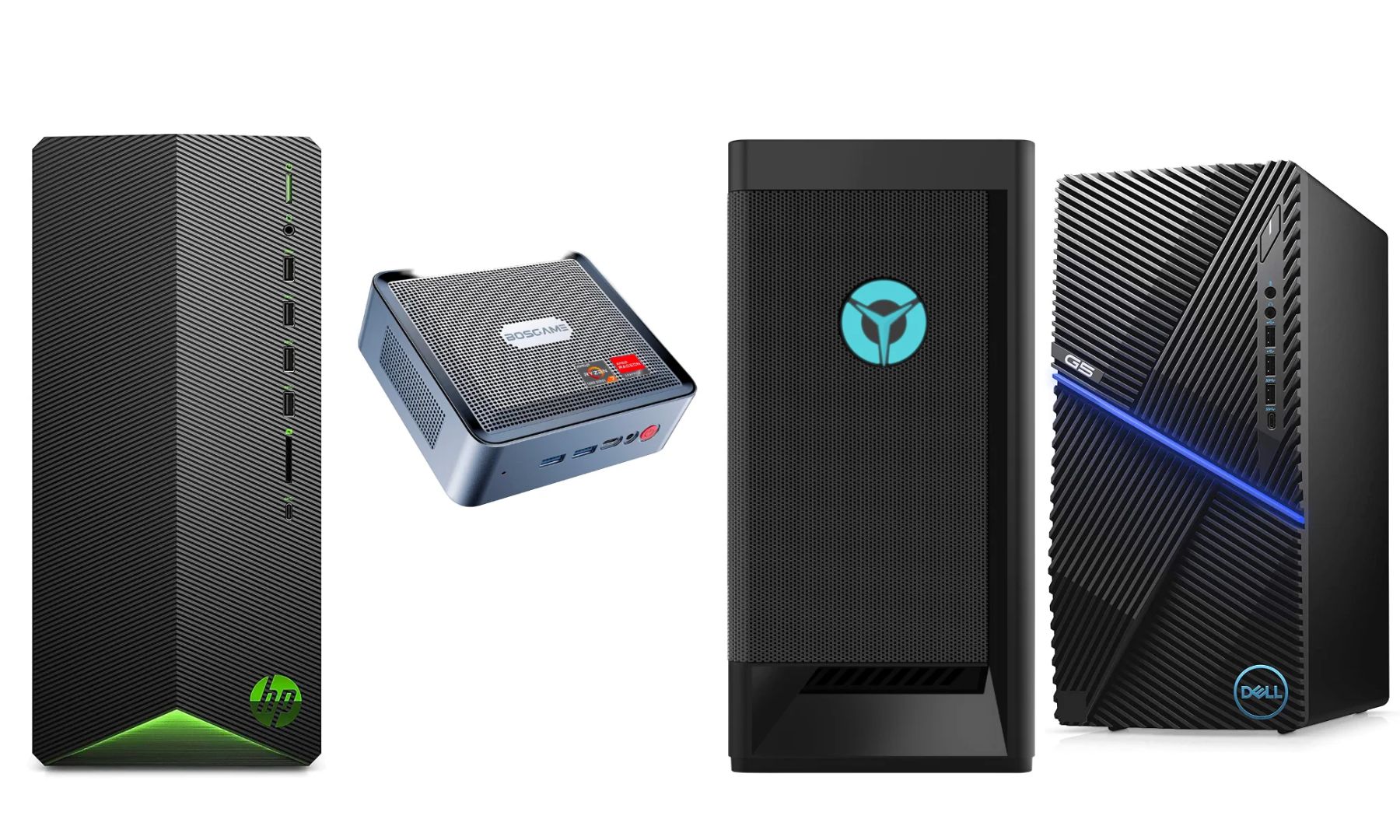Understanding RAM
RAM, or random access memory, is an essential component of your PC that plays a crucial role in its performance. It serves as the temporary storage for data that is actively being accessed by the processor. Think of it as a workspace for your computer – the more RAM you have, the larger your workspace, and the faster your computer can process tasks.
RAM allows your computer to quickly access and retrieve data needed by the applications you’re running. Whether it’s opening multiple browser tabs, editing photos, or running complex software, your RAM bears the brunt of the workload. An inadequate amount of RAM can lead to sluggish performance, freezing, and even crashes.
It’s important to understand that RAM is different from your computer’s storage, such as the hard drive or SSD. While storage retains data even when the computer is turned off, RAM loses all its stored information when the computer is shut down. RAM provides fast and temporary data access, allowing your CPU to efficiently process tasks.
The amount of RAM you need depends on the specific tasks you perform on your computer. For basic everyday tasks like web browsing, word processing, and multimedia playback, 4GB to 8GB of RAM is usually sufficient. However, if you’re engaging in memory-intensive activities like video editing, 3D rendering, or running virtual machines, you would benefit from having 16GB or more of RAM.
It’s essential to consider the operating system requirements and the software you intend to use before upgrading your RAM. Some applications, particularly resource-intensive ones, have specific RAM requirements, and exceeding those recommendations can provide considerable performance gains.
Furthermore, keep in mind that there are different types of RAM, such as DDR3 and DDR4, with varying speeds and compatibility with your motherboard. Checking your computer’s specifications, consulting the motherboard manufacturer’s website, or seeking professional advice can help you determine the type and maximum amount of RAM your PC can support.
By understanding the significance of RAM and its impact on your PC’s performance, you can make informed decisions when it comes to upgrading or adding more RAM. Next, we’ll discuss how to check the current RAM installed on your computer, so you can determine whether an upgrade is necessary.
Checking your current RAM
Before proceeding with adding more RAM to your PC, it’s important to first check how much RAM you currently have installed. This will help you determine if an upgrade is necessary and how much additional RAM you can add.
There are a few different methods you can use to check your current RAM. One way is to access the System Information tool on your computer. On Windows, you can do this by pressing the Windows key + R, typing “msinfo32” into the Run dialog box, and then hitting Enter. On a Mac, you can go to the Apple menu, click on “About this Mac,” and then navigate to the “Memory” tab.
Another method is to use the Task Manager on Windows. You can open it by right-clicking on the taskbar and selecting “Task Manager.” Click on the “Performance” tab and then select “Memory” from the left-hand side. Here, you’ll see a breakdown of your current RAM usage, including the total amount of RAM installed.
In addition to these built-in tools, there are also third-party applications available that can provide more detailed information about your RAM. These applications can give you insights into the speed, type, and other specifications of your RAM modules.
Once you have determined the amount of RAM currently installed on your computer, consider if it meets your needs. If you find that your RAM usage is consistently high, causing performance issues or limiting your ability to run certain software or tasks smoothly, it may be time to upgrade. Adding more RAM can significantly improve your computer’s speed and responsiveness.
Keep in mind that while adding more RAM can be beneficial, there are limits to how much your computer can support. Consult your computer’s documentation or manufacturer’s website to find out the maximum amount of RAM your system can handle. This will ensure that you don’t exceed the hardware limitations and waste resources.
Now that you have verified your current RAM capacity, and assessed whether an upgrade is necessary, we can move on to the next step: understanding compatibility and choosing the right RAM.
Compatibility and limits
When it comes to adding more RAM to your PC, it’s crucial to understand the compatibility requirements and limitations to ensure a successful upgrade. Not all RAM modules are compatible with every computer, so it’s important to consider a few key factors.
The first consideration is the type of RAM your computer supports. The most common types are DDR3 and DDR4, with DDR4 being the more recent and faster option. Check your computer’s documentation or motherboard specifications to determine the compatible type of RAM. Mixing different RAM types is generally not recommended and can cause compatibility issues.
Another factor to consider is the speed of the RAM. RAM speed is measured in megahertz (MHz) and determines how quickly the data can be accessed. It’s important to choose RAM with a speed that is supported by your motherboard. Using RAM with a higher speed than the motherboard can handle might result in the RAM automatically downclocking to match the motherboard’s capabilities, potentially wasting the RAM’s potential.
The capacity of your motherboard is also significant. Different motherboards have different limits on how much RAM they can support. Consult your motherboard’s documentation or manufacturer’s website to find the maximum amount of RAM your system can accommodate. Ensure that the total capacity of the RAM modules you plan to install does not exceed this limit.
Additionally, consider the configuration of your RAM modules. Most motherboards support dual-channel or quad-channel memory configuration, which offers increased performance by accessing memory in parallel. It’s important to install the RAM modules in the correct slots to take advantage of these configurations. Consult your motherboard’s documentation to determine the proper installation and configuration guidelines.
Lastly, if you’re planning to use existing RAM modules along with the new ones, compatibility can be an issue. Mixing RAM modules with different speeds or timings may lead to instability or compatibility conflicts. It’s recommended to use identical RAM modules, preferably from the same manufacturer and with matching specifications, for optimal compatibility.
By understanding the compatibility requirements and limitations, you can choose the right RAM that will work seamlessly with your computer. In the next section, we will discuss how to select the appropriate RAM for your needs.
Choosing the right RAM
When selecting the right RAM for your PC upgrade, there are a few key factors to consider. By taking these factors into account, you can ensure optimal compatibility and performance.
The first consideration is the type of RAM your computer supports. As mentioned earlier, the most common types are DDR3 and DDR4. Ensure that you choose RAM that matches the type supported by your motherboard. Mixing different RAM types can lead to compatibility issues and may result in your system not recognizing the RAM modules.
RAM speed is another important factor to consider. Higher RAM speeds allow for faster data transfer, resulting in better overall performance. However, it’s crucial to select RAM with a speed that is supported by your motherboard. Check your motherboard’s specifications to determine the maximum RAM speed it can handle. Choose RAM modules that match this speed to avoid any compatibility issues.
Capacity is also an important consideration when selecting RAM. Determine your needs and the tasks you’ll be performing on your computer. If you engage in memory-intensive activities like photo or video editing, gaming, or running virtual machines, opt for higher-capacity RAM modules to ensure smooth and efficient multitasking. For everyday tasks like web browsing and word processing, a lower capacity RAM module may suffice.
In addition to capacity, be mindful of the number of RAM slots available on your motherboard. If you have limited slots, choose RAM modules with higher capacities to make the most efficient use of the available slots. Conversely, if your motherboard has several slots, you have flexibility in choosing smaller-capacity RAM modules and expanding your RAM capacity incrementally.
Choosing reputable brands for your RAM modules is recommended. Established brands often provide better quality control and compatibility assurance. It’s important to do your research and read reviews to ensure that you’re purchasing reliable RAM modules from trusted manufacturers.
Lastly, consider your budget when selecting RAM. Higher capacity and faster speed RAM modules tend to be more expensive. Evaluate your needs and strike a balance between capacity, speed, and cost to find the right RAM that meets your requirements without stretching your budget too much.
By considering the type, speed, capacity, brand, and budget, you can choose the right RAM modules that are compatible with your motherboard and deliver optimal performance. With the proper RAM selected, you’re ready to move on to the next steps: preparing for installation and adding the new RAM to your PC.
Preparing for Installation
Before you start installing your new RAM modules, it’s important to take a few preparatory steps to ensure a smooth and successful upgrade process. By following these guidelines, you can minimize the risk of damage to your PC and ensure optimal performance.
The first step is to power off your computer and disconnect any cables or peripherals. This includes the power cord, keyboard, mouse, and any other devices connected to your PC. Disconnecting these components will prevent any accidental damage and electrostatic discharge during the installation process.
Next, find a clean and well-lit workspace to work on. A static-free environment is ideal to avoid potential damage caused by static electricity. You can use an anti-static wristband or mat to further minimize the risk of static discharge when handling the RAM modules.
Ensure that you have the necessary tools for the installation process. Most RAM modules can be installed without any specialized tools. However, it’s a good idea to have a small screwdriver on hand in case you need to remove any screws securing the RAM slots on your motherboard.
Before touching the RAM modules, ground yourself by touching a metal surface to discharge any static electricity in your body. This step helps prevent any accidental damage to the sensitive electronic components of the RAM modules.
Inspect the RAM slots on your motherboard to locate the empty slots where you will insert the new RAM modules. Take note of any latches or retention mechanisms that may be present. Familiarize yourself with these mechanisms to ensure that you can properly secure the new modules in place later.
Lastly, read the documentation provided with your RAM modules. This documentation may contain specific instructions or recommendations from the manufacturer for installing their RAM modules. Following these instructions can help ensure a trouble-free installation process and avoid potential issues.
By taking these preparatory steps, you’ll be well-equipped and ready to install your new RAM modules. In the next section, we will guide you through the process of removing the old RAM modules from your PC.
Removing old RAM
Before installing new RAM modules, you’ll need to remove the old RAM modules from your PC. This process involves careful handling to avoid damage and ensure a successful upgrade. Follow these steps to safely remove the old RAM:
1. Ensure that your PC is powered off and disconnected from any power source.
2. Locate the RAM slots on your motherboard. These are usually long, thin slots with small retention mechanisms on each end.
3. Gently press outward on the retention mechanisms on each side of the RAM module until you hear a click. This will release the module from the slot.
4. Carefully remove the old RAM module by pulling it straight out of the slot. Avoid touching the gold contacts on the bottom of the module, as this can cause static damage.
5. Place the removed RAM module on an anti-static surface or in an anti-static bag to protect it from potential damage.
6. If you have multiple RAM modules installed, repeat the process for each module.
7. Take a moment to inspect the RAM slots for any dust or debris. Use compressed air or a soft brush to clean out any particles that may have accumulated.
8. Always handle the RAM modules with care, avoiding excessive force or bending. They are delicate electronic components that need to be treated gently.
By following these steps, you can safely remove the old RAM modules from your PC. In the next section, we will guide you through the process of installing the new RAM modules.
Installing new RAM
Once you have removed the old RAM modules, you’re ready to install the new RAM modules in your PC. Follow these steps to ensure a successful installation:
1. Take the new RAM modules out of their packaging, being careful to handle them only by the edges. Avoid touching the gold contacts on the bottom of the modules to prevent static damage.
2. Align the notches on the bottom of the RAM module with the gap in the RAM slot on the motherboard. Ensure that the module is facing the right way by matching the notch position with the slot key.
3. Gently insert the RAM module into the slot at a 45-degree angle. Apply even pressure to both ends of the module until it is fully seated in the slot.
4. Once the module is seated correctly, push down with your fingers until you hear a click. This indicates that the retention mechanisms have locked the module in place.
5. Repeat the process for any additional RAM modules you are installing, following the same alignment and insertion steps.
6. Once all the new modules are installed, double-check that they are securely seated in the slots. Give them a light tug to ensure they are firmly in place.
7. If you had to remove any screws to access the RAM slots, don’t forget to reattach them to secure the motherboard in place.
8. With the new RAM modules properly installed, you can now reconnect any peripherals and power cords to your PC.
9. Power on your computer and wait for it to boot up. The computer should automatically detect the new RAM modules and adjust its settings accordingly.
10. To confirm that the installation was successful, you can check your computer’s system information or task manager to verify that the new RAM modules are recognized and functioning correctly.
By following these steps, you can safely and effectively install new RAM modules in your PC. In the next section, we will discuss how to verify the success of the installation and troubleshoot any common issues that may arise.
Verifying Installation Success
After installing new RAM modules in your PC, it’s important to verify the success of the installation to ensure that the system recognizes and utilizes the additional memory. Here are some steps to follow to verify the installation:
1. Start by powering on your computer and allowing it to fully boot up. It may take a little longer than usual as the system adjusts to the new RAM configuration.
2. Once your computer is up and running, go to the system information tool on your operating system. On Windows, you can do this by pressing the Windows key + R, typing “msinfo32” into the Run dialog box, and hitting Enter. On a Mac, go to the Apple menu, click on “About this Mac,” and navigate to the “Memory” tab.
3. In the system information tool, you should see the total amount of RAM installed in your computer. It should match the cumulative capacity of the new RAM modules you installed.
4. If the system information shows the correct total amount of RAM, it means that the installation was successful, and your computer is recognizing the new RAM modules. This increased memory capacity should boost your system’s performance, allowing for smoother multitasking and faster application loading times.
5. To further verify the success of the installation, you can also check the task manager on your operating system. It will show the current RAM usage and give you an idea of how the system is utilizing the additional memory. If you see the newly installed RAM being actively utilized, it indicates that it’s functioning as expected.
If you encounter any issues or if the system information and task manager don’t reflect the correct amount of installed RAM, try the following troubleshooting steps:
1. Power off your computer, remove the new RAM modules, and reseat them in their slots. Ensure that they are properly aligned and firmly seated.
2. Check if the RAM modules are compatible with your motherboard and operating system. Ensure that they meet the necessary specifications and requirements.
3. Double-check that the RAM modules are properly inserted into the correct slots. Refer to your motherboard’s documentation for the recommended slot configurations.
4. If you are still experiencing issues or if the system does not recognize the new RAM modules, it’s recommended to seek assistance from a professional or contact the manufacturer for further support.
By verifying the success of the installation and troubleshooting any potential issues, you can ensure that your newly installed RAM is functioning correctly and enjoying the benefits of increased memory capacity.
Troubleshooting Common Issues
While adding new RAM modules to your PC is generally a straightforward process, it’s not uncommon to encounter some common issues. Here are a few troubleshooting tips to help you address these issues:
1. System not recognizing new RAM: If your system fails to recognize the new RAM modules, start by double-checking that the modules are properly seated in the RAM slots. Remove them and reinsert them, ensuring they are firmly in place. If the issue persists, try cleaning the contacts on the RAM modules with an eraser and gently reinsert them again. Additionally, check if your motherboard’s BIOS is up to date and if there are any specific settings that need to be adjusted to support the new RAM.
2. System instability or crashes: If your system becomes unstable or experiences frequent crashes after installing new RAM, it could indicate compatibility issues or faulty RAM modules. First, make sure that the RAM modules are fully compatible with your motherboard and operating system. Try running a diagnostic tool, such as Memtest86, to check for any errors in the RAM. If errors are detected, it’s best to replace the faulty module(s) or seek professional assistance.
3. Less RAM available than expected: If the system information tool or task manager shows less RAM available than you installed, it could be due to reserved system resources or limitations of your operating system. Some integrated graphics solutions and BIOS configurations allocate a portion of system memory for graphics use. Check your BIOS settings and operating system documentation to see if any memory allocation options can be adjusted to make more RAM available.
4. Incompatibility with existing RAM: When installing new RAM alongside existing RAM modules, it’s essential to ensure compatibility. Mismatched speeds, timings, or capacities can sometimes cause issues. Try removing the existing RAM and installing only the new modules to see if they work correctly. If they do, you may need to purchase additional RAM modules that are identical to the new ones you installed.
5. Insufficient power supply: High-capacity or overclocked RAM modules may require more power. If your system experiences instability or fails to boot after installing new RAM, it’s worth checking if your power supply is adequate to support the increased demands. Consult your power supply’s specifications or consider upgrading to a higher wattage unit if necessary.
If you encounter persistent issues or if the troubleshooting steps outlined above do not resolve the problem, it’s advisable to seek professional assistance or contact the manufacturer for further support. They can provide more specific guidance tailored to your system and help you resolve any technical difficulties.
Final Thoughts
Adding more RAM to your PC can greatly improve its performance, allowing for smoother multitasking, faster application loading times, and an overall snappier user experience. By understanding RAM, checking your current RAM, ensuring compatibility, and following the proper installation steps, you can successfully upgrade your PC’s memory.
Remember to research and choose the right RAM modules for your specific needs, considering factors such as type, speed, capacity, and budget. Take the necessary precautions during the installation process to avoid static damage and ensure a secure fit for the new RAM modules.
After the successful installation, verify that the system recognizes the new RAM by checking the system information and task manager tools. Address any issues that may arise by troubleshooting common problems, such as unrecognized RAM, system instability, or compatibility conflicts.
By following these steps and troubleshooting tips, you can enjoy the benefits of increased RAM and optimize your PC’s performance. However, if you’re unsure or uncomfortable performing the upgrade yourself, seek assistance from a professional technician to ensure a smooth installation and avoid any potential damage to your PC.
Remember, adding more RAM is just one aspect of optimizing your computer’s performance. Regular maintenance, such as software updates, disk cleanup, and malware scans, are equally important. By combining these efforts, you can keep your PC running at its best and enhance your overall computing experience.







